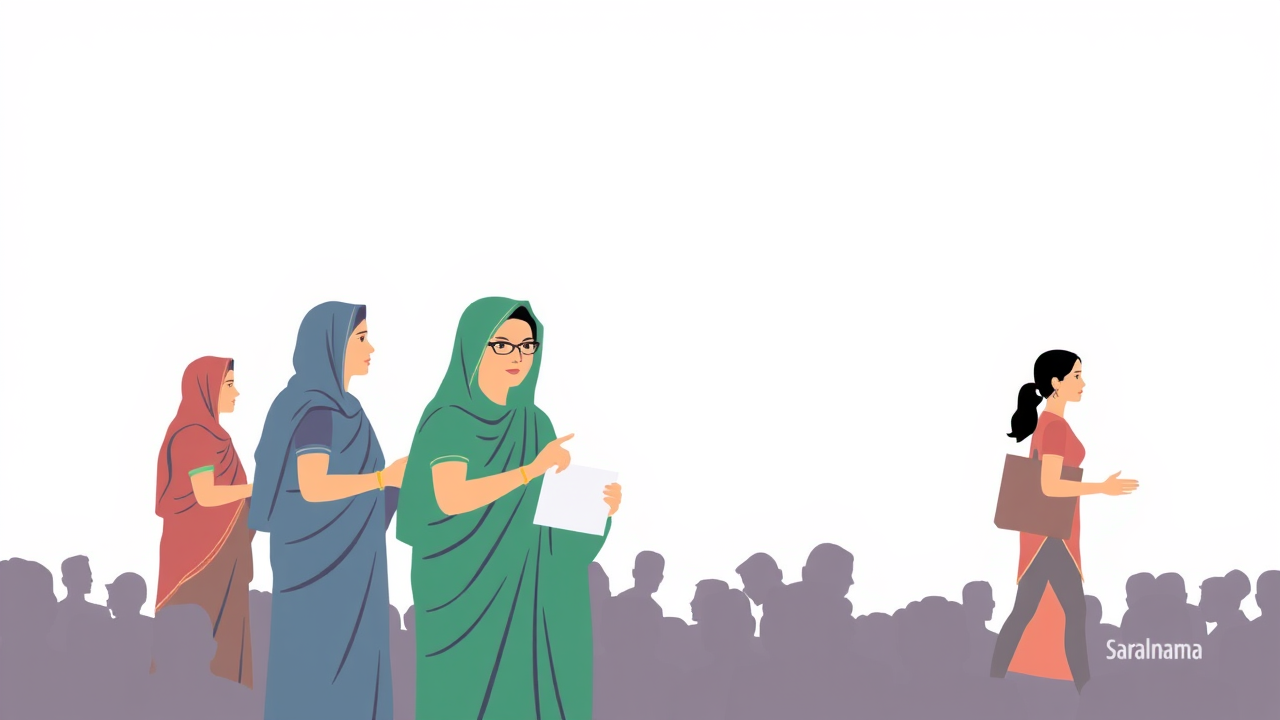The recent Bihar election resulted in a decisive victory for the NDA alliance, led by Nitish Kumar serving his ninth term as Chief Minister. While many observers credit the outcome to a Rs 10,000 cash transfer to women under the Mahila Rojgar Yojana distributed just before polling, this explanation oversimplifies a complex electoral story. The result reflects deeper factors including voter perceptions of governance, delivery of promises, and the opposition's inability to present a credible alternative. Throughout the campaign, the dominant sentiment was for change, yet this demand was directed primarily at the 20-year incumbent Nitish Kumar rather than his challengers. Voters wanted better performance on corruption, unemployment, migration, and bureaucratic inefficiency but still viewed Nitish as the leader most capable of delivering results. The RJD's Tejashwi Yadav struggled to overcome the legacy of the "jungle raj" era associated with his father Lalu Prasad's government. Meanwhile, newcomer Prashant Kishor failed to gain traction despite saturating social media, inadvertently reinforcing Nitish's image as the experienced administrator. The Congress party proved ineffective in mobilizing support. Ultimately, voters associated Nitish with concrete work on infrastructure, law and order, and women's empowerment, contrasting him with opponents seen as offering only speeches or representing narrow caste interests. The verdict reflects continuity rather than disruption in Bihar's political landscape.

Beyond Cash Transfers: Women Voters and Long-Term Policy
The Rs 10,000 transfer under the Mahila Rojgar Yojana has been widely cited as the election's deciding factor, but this interpretation underestimates women voters' discernment. While the timing of the cash distribution days before polling raises questions about electoral norms, attributing the entire NDA victory to this single measure dismisses women's ability to evaluate governance critically. The scheme was not an isolated initiative but part of a sustained series of pro-women policies spanning nearly two decades. These included bicycles for schoolgirls starting in 2006, reservation in panchayats and government jobs, the extensive Jeevika network of self-help groups, and the prohibition policy despite its flaws. Women turned out to vote in significantly higher numbers than previous elections, and their support reflected a broader assessment of governance rather than a simple transactional response. The women's vote, though substantial, cannot alone explain the magnitude of the NDA's landslide victory across Bihar's diverse constituencies.
Nitish's Renewed Mandate and Opposition's Failure
Despite narratives in Patna's political circles suggesting Nitish Kumar had diminished as a leader, voters on the ground still viewed him as the "vikas purush" or development man. Even critics acknowledged his accomplishments with the phrase "Kaam toh bahut kiye hain" meaning he has worked extensively. Voters credited him with improvements in law and order, infrastructure including roads and bridges, electricity supply, and women's empowerment, echoing the strong mandate he received in 2010. The opposition struggled to present credible alternatives. Tejashwi Yadav promised one government job per family, while Prashant Kishor pledged to immediately bring all migrants home, promises many voters found implausible. The defining question became "Sambhav hai kya?" or is it even possible? Tejashwi failed to distance the RJD from the "jungle raj" narrative associated with his father Lalu Prasad's government, when lawlessness supposedly prevailed after sunset. The RJD remained perceived as Yadav-centric, lacking caste diversity in leadership and outreach to other communities.
Migration, New Challengers, and the Path Forward
Migration or "palayan" emerged as the election's dominant issue, largely because Prashant Kishor elevated it in campaign discourse. However, Kishor's social media saturation backfired among an electorate conscious of Bihar's rich political history spanning from Gandhi's first mobilizations to the JP movement and Mandal politics of the 1990s. Voters saw Kishor as lacking ground-level understanding while proposing to start afresh. Ironically, while failing to gain electoral traction himself, Kishor may have inadvertently helped Nitish by redirecting attention to the incumbent's track record. The Congress proved unable to capitalize on Rahul Gandhi's Voter Adhikar Yatra or the appointment of a Dalit state president. Internal RJD-Congress wrangling further weakened the Mahagathbandhan alliance. The verdict ultimately positioned Nitish as representing work versus Tejashwi's caste politics and Kishor's mere speeches. Looking ahead, Nitish faces the responsibility to address previously neglected areas including urbanization, industrial investment, and tourism development to fulfill voters' expectations for comprehensive progress.
Source: Link
